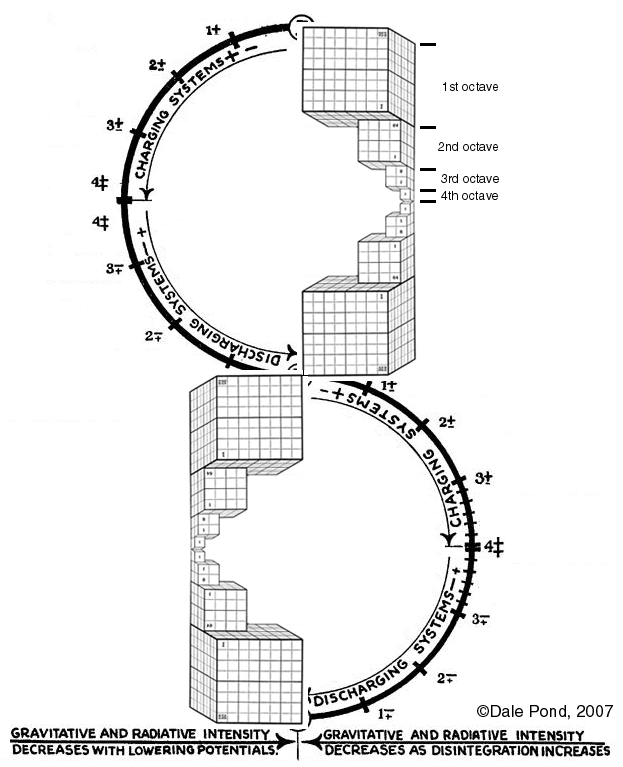
Keeping in mind Russell claimed 'tone' (music notes) did not follow the Scale of Locked Potentials pattern and nor do his Indig numbers match music notes in a single octave. His numbering system does not follow musical note progressions as we understand musical notes as they occur within a single octave. When considering Russell's Indig numbers as musical tones we are forced to assign multi-octave values to the notes because of basic physics reasons. This is because as volumes decrease so does wavelength (as cube root of the volume) decrease which of course is an increase in frequency. These naturally occuring arithmetical relations demands/stipulates these Indig numbers are octave relationships when considered relative one to the others and not fractions of octave relationships (notes) as music notes within a single octave would indicate as presented by Russell Figure 12.05 - Russells Cosmic Clock. Apparently Russell used this notation as a short-hand or convention within the context of his ideas to show degrees of relativity or harmony. Please see Music wherein music notes/intervals and Russell's Indig numbers have been matched up.
For instance, a wavelength of 8, volume of 512 units at 1+, Figure 12.09 - Dimensions and Relationships, corresponding to a volume that is decreased to a volume of 64 (at 2+) which divides the corresponding wavelength by two and thereby doubles the frequency to the next octave and so forth for all subsequent Indig steps. Therefore these are progressions from one octave to the next octave because length is halved in each step, thus doubling the frequency at each Indig step. This reveals what Russell labeled an octave is actually a gamut or range of octaves where 0, 1-, 2-, 3-, 4++, 3+, 2+, 1+, 0 covers a range of four octaves Table 12.02.01 - Wavelengths and Frequencies and Figure 12.10 - Russells Locked Potential Wave of actual frequency progressions. This counting by multiple octaves is all very interesting when we realize Keely counted octaves in gamuts of seven octaves (these being true musical octaves). In Figure 12.04 - Locked Potential Points Relations and Descriptions we see what Russell would call two octaves in his system but in standard musical systems the chart would be showing two times four octaves or eight full octaves of vibratory movement as clearly shown in Figure 12.10 - Russells Locked Potential Wave.
Of course we know from the vibration section, Part 9 the above octave progressions pertain to vibration while oscillation is in reverse proportional digression; i.e., when one increases the other decreases. For instance, as speed is wound up into power going from 1+ to 4+ vibration is actually decreased in frequency while oscillation is proportionately and reciprocally increased in opposite amount. This Principle of Reciprocity holds for all the other Scale of Locked Potentials relationships.
